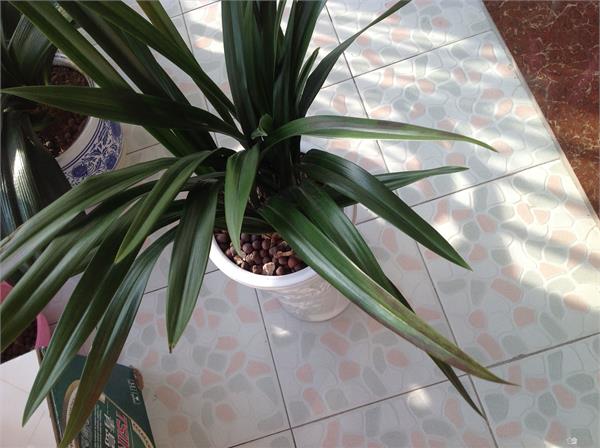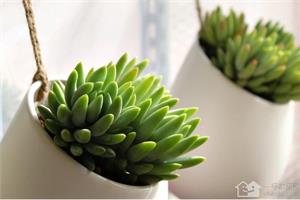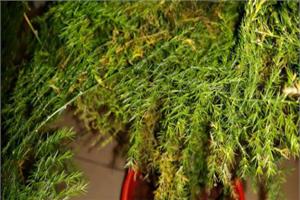The causes and Countermeasures of the scorched Tip of Orchid leaves how to deal with the yellowing of Orchid leaves
Orchid is a kind of plant with great vitality, and many people have this feeling in orchid culture. But there are also some people whose leaves turn yellow. Let's take a look at the causes and countermeasures of the scorched tip of orchid leaves, and how to deal with the yellowing of orchid leaves.

The reason for the yellowing of orchid leaves
1, the basin is too dry or the air humidity is too small, the basin surface is too dry, this kind of situation generally the orchid leaf shrinks the head cannot show immediately, the first reflection is the orchid leaf presents the dehydration shape, after waiting for the watering recovery, it is easy to walk the grass from the old seedling, the orchid leaf starts from above to down the yellow leaf, if the basin water injury, the orchid leaf turns yellow, is from the bottom to up the yellow leaf, the grass walking time is slow.
2. Langen fungus damage or Langen crystal head affected by water stain should be the same, water stain is a process, crystal head rot is the result, leaf tip coke head is a surface phenomenon. Such a coke tip, as Fei Xiang said, the leaf tip is black, after the treatment in the basin, the general coke head is no longer extended.
3. The focal point is caused by fertilizer damage, and the focal tip is brown or black. The boundary with the non-fat damage orchid leaf is very obvious, and the normal tissue of the orchid leaf is also prone to fat spots, such irregular round spots, the center of the spot is brown, and the place where it comes into contact with the normal tissue is a circle of black spots with uneven thickness, and the boundary is also very obvious.
4. Many of the bacteria damage caused by the orchid strain are shown from the coke tip phenomenon. For example, the blight tip is white-brown, the junction with the normal blue leaf tissue is dark brown, the white brown is the dead dry withered area, the black brown is the fungus outbreak area; the leaf blight, the leaf tip light brown is the dead dry withered area, the dark brown is the fungus damage outbreak area, and most of the contact areas with normal blue leaf tissue are yellowish green, this yellow-green area is the infection area of normal orchid leaf tissue, which is different from the blight tip disease. Anthracnose is also easy to show the focal tip, the leaf tip shows a dark brown, a light brown, alternately to the lower part of the blue leaf, and independent or connected dark-brown patches appear in the leaves, and the periphery of the plaque is yellowish.
The causes and Countermeasures of the Coke Tip of Orchid leaves
(1) the light is too strong. Orchids are semi-shaded plants, which are suitable for exposure to morning light, astigmatism and soft light. If the light time is too long and the light quality is too strong, it is very easy to cause the leaves to turn yellow and the leaf tail to be charred. The countermeasure is to adjust the light time and intensity timely in summer and autumn to avoid direct light. The most commonly used and easiest method is to use sunshade screens of different specifications, with shading intensity of 60% to 80%, and edge art, chimera art, crystal art and picture spot art to reach 90%.
(2) dry air. When the air is moist, the orchid leaves are green and shining. If the air is dry, the texture of the leaf is rough and the focal tip phenomenon occurs from time to time. Especially in the dry, rainless and windy north, the air is often dry in spring, autumn and winter, and the phenomenon of blue leaf coke tip is particularly serious. The solution, when the air is dry, often spray to the leaves and sprinkle water to the ground. Can also be in the orchid basin under the sink, orchid shed, orchid indoor use nylon cloth to do pool, hang wet door curtain, install automatic spray humidifier.
(3) the degree of watering. Like other plants, orchids cannot do without water, and underwatering or too much watering can cause losses. There is often this situation, because the basin soil is too full, watering is not much, that is, the outflow, the result is wet above and dry at the bottom, forming "half-cut" water. Over time, the root system first scorched from the leaf tip because of the loss of water from the root system. Another reason is that due to carelessness and leakage of water, this phenomenon is also easy to occur. On the contrary, both soil and granular plants are watered in the same amount on time, resulting in excessive wet anoxia, poor breathing, blackening and even rot of the root system, causing the orchid leaves to dry and burn. The countermeasure is to water the orchids timely and appropriately according to the growth habits of different orchids to prevent the occurrence of the above two bad tendencies.
(4) excessive fertilization. Orchids are fleshy roots and symbiosis with orchids. As long as thin fertilizer is applied frequently, they can grow strong and fragrant. Such as excessive fertilization, especially raw fertilizer or thick fertilizer, will lead to root rot, leaf tip yellowing, premature senescence. The correct way is to apply fertilizer timely and appropriately according to different orchid varieties, different growth periods and different growth trends. If the root is fertilized, the liquid fertilizer retted by organic fertilizer must be mixed with 10% 20 times of clear water before use, while the chemical fertilizer should be prepared at 0.1% 0.2% and applied once in about 1 month. Foliar spraying should be light rather than thick. If you use blue fungus king, spray Shibao and other micro-fertilizer, must be prepared in accordance with the product instructions, can not increase the concentration at will to avoid causing fertilizer damage.
(5) the physiological function of leaves is abnormal. Some due to excessive nitrogen application, resulting in young leaves, retrograde resistance decreased; some due to spraying fertilizer, pesticide concentration is too high, silting leaf tip, resulting in damage; some due to ineffective cold prevention measures in winter, resulting in leaf tip frostbite. There are also orchid basin spacing is too small, leaf tip and leaf tip friction collision with each other, resulting in damage. The measures taken are treatment based on syndrome differentiation and taking the right seat. That is, the rational application of the three elements of nitrogen, phosphorus and potassium, the concentration of fertilizer spraying should be light rather than dense, do a good job of cold prevention and warmth protection in severe winter and early spring, increase the distance between basin and basin, and prevent the occurrence of phenomena affecting the physiological function of leaves.
What if the leaves of orchids turn yellow?
The main results are as follows: 1. Due to the sudden change of the conservation environment of orchids, the leaves do not absorb water well, resulting in the phenomenon of yellow leaves.
2. Potted orchids bought directly are newly potted by merchants, and orchids do not adapt to the soil, which temporarily affects nutrient absorption and leads to yellow leaves.
3. Water yellow, that is, too much water causes the soil to accumulate water for a long time, poor air permeability and even some fibrous roots rot, showing that the tender leaves are dark yellow and dull, and the new shoots shrink.
The above is the introduction of this article, I believe you have a simple understanding after reading it, if necessary, you can continue to pay attention to the No. 1 home network for more information.
- Prev

Six reasons for softening leaves of succulent plants and their treatment
Six reasons for softening leaves of succulent plants and their treatment
- Next

Reasons for yellowing of asparagus leaves how to deal with the yellowing of asparagus leaves
Reasons for yellowing of asparagus leaves how to deal with the yellowing of asparagus leaves
Related
- Wuhan Hospital Iron Tree Blooming Result Was Instantly Frightened by the Gardener Master
- Which variety of camellia is the most fragrant and best? Which one do you like best?
- What is the small blue coat, the breeding methods and matters needing attention of the succulent plant
- Dormancy time and maintenance management of succulent plants during dormancy
- Minas succulent how to raise, Minas succulent plant pictures
- What are the varieties of winter succulent plants
- How to raise succulent plants in twelve rolls? let's take a look at some experience of breeding twelve rolls.
- Attention should be paid to water control for succulent plants during dormant period (winter and summer)
- Watering experience of twelve rolls of succulent plants
- Techniques for fertilizing succulent plants. An article will let you know how to fertilize succulent plants.

